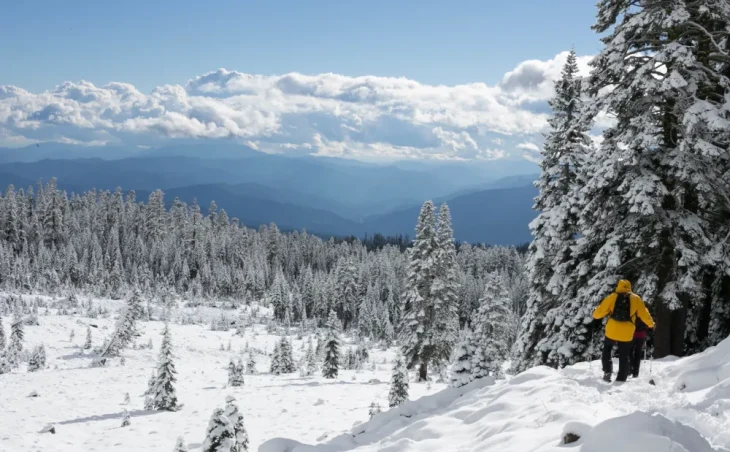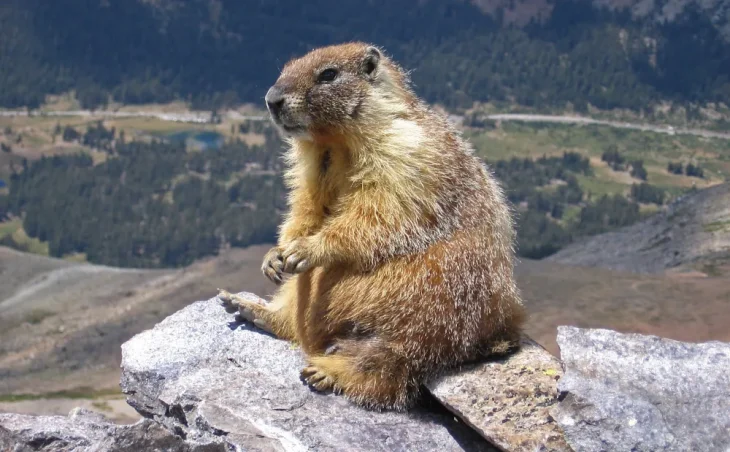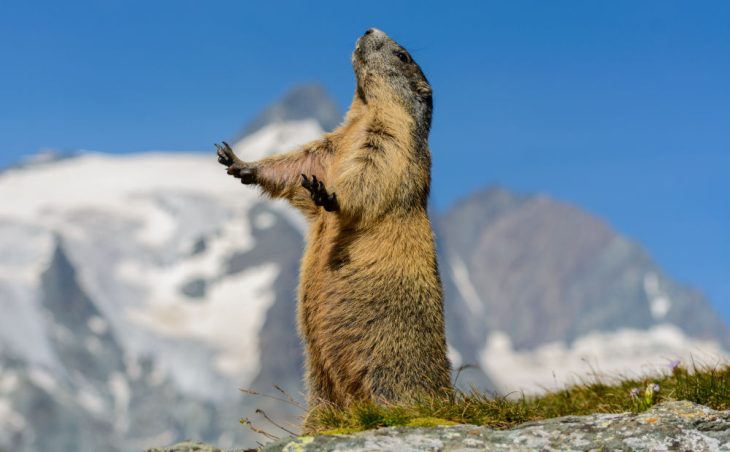Nestled amidst the majestic peaks and lush meadows of the European Alps, the endearing marmots (Marmota marmota) captivate both nature enthusiasts and scientists alike. These charming rodents, known for their distinctive burrows and piercing whistles, play a significant role in the alpine ecosystem. In this exploration, we delve into the fascinating world of marmots in the Alps, shedding light on their behaviour, habitat, ecological importance, and their enduring appeal to humans.
Fun facts about Marmots
- The collective name marmots is Madness.
- Marmots hibernate from Sept to late April.
- Baby marmots are called pups.
- Marmots are 30 to 60cm in length.
- Marmots weigh from 3kg to 7kg.
- Marmots’ DNA is close to squirrels.
- Marmots are a common sight for those who ski in late April as the snow starts to melt.
Habitat and Distribution

Marmots thrive in alpine and subalpine regions, predominantly inhabiting the mountainous terrains of the European Alps. Their distribution spans countries such as Switzerland, France, Italy, Austria, and Germany, where they find refuge in rocky slopes, meadows, and alpine grasslands. These environments provide ample opportunities for burrow construction and foraging, essential for their survival in the harsh alpine climate.
Behavioural Patterns
Marmots are renowned for their social structure and intricate communication methods. Living in colonies known as “marmot towns,” they establish hierarchical relationships and engage in cooperative behaviours to ensure group survival. Their iconic whistle serves as a warning signal against predators and territorial disputes within the colony. Marmots exhibit remarkable adaptability, hibernating through the winter months to conserve energy and emerging during the warmer seasons to forage and breed.
Ecological Importance
Despite their small stature, marmots play a vital role in shaping the alpine ecosystem. Their burrowing activities aerate the soil, facilitating plant growth and nutrient cycling. Additionally, their grazing habits influence vegetation composition, thereby impacting the overall biodiversity of alpine meadows. As prey species, marmots serve as a crucial food source for various predators, contributing to the intricate web of trophic interactions in the Alps.
Conservation Challenges
While marmots are not currently classified as endangered, they face conservation challenges stemming from habitat degradation, climate change, and human disturbance. Alpine development projects, tourism activities, and agricultural expansion encroach upon marmot habitats, disrupting their natural behaviours and habitat connectivity. Climate change exacerbates these threats, altering alpine ecosystems and potentially reducing suitable habitats for marmot populations.
Human Interaction and Cultural Significance
Beyond their ecological importance, marmots hold a special place in human culture and folklore. For centuries, they have been revered in alpine communities as symbols of resilience and adaptability. Their playful antics and melodious whistles attract tourists and photographers to the Alps, contributing to local economies through ecotourism initiatives. However, responsible tourism practices are essential to minimize human impact on marmot habitats and ensure their long-term conservation.
Conservation Efforts and Future Prospects

Efforts to conserve marmot populations in the Alps encompass habitat restoration, population monitoring, and public awareness campaigns. Conservation organizations collaborate with local communities, researchers, and policymakers to implement sustainable management strategies that balance human needs with ecological preservation. By safeguarding marmot habitats and promoting coexistence with human activities, these initiatives aim to secure the future of these charismatic rodents in the Alpine landscape.
Marmots in the Alps: A Summary
Marmots in the Alps embody the resilience and adaptability required to thrive in one of the world’s most challenging environments. From their intricate social structures to their ecological significance, these charismatic rodents captivate our imagination and inspire efforts for their conservation. As stewards of the Alpine ecosystem, it is our collective responsibility to preserve their habitats and ensure their enduring presence amidst the timeless beauty of the mountains.
Chat with our experts
For tips and advice on booking your next ski holiday, call our expert sales team on:
020 8313 3999 All Ski Deals
All Ski Deals
